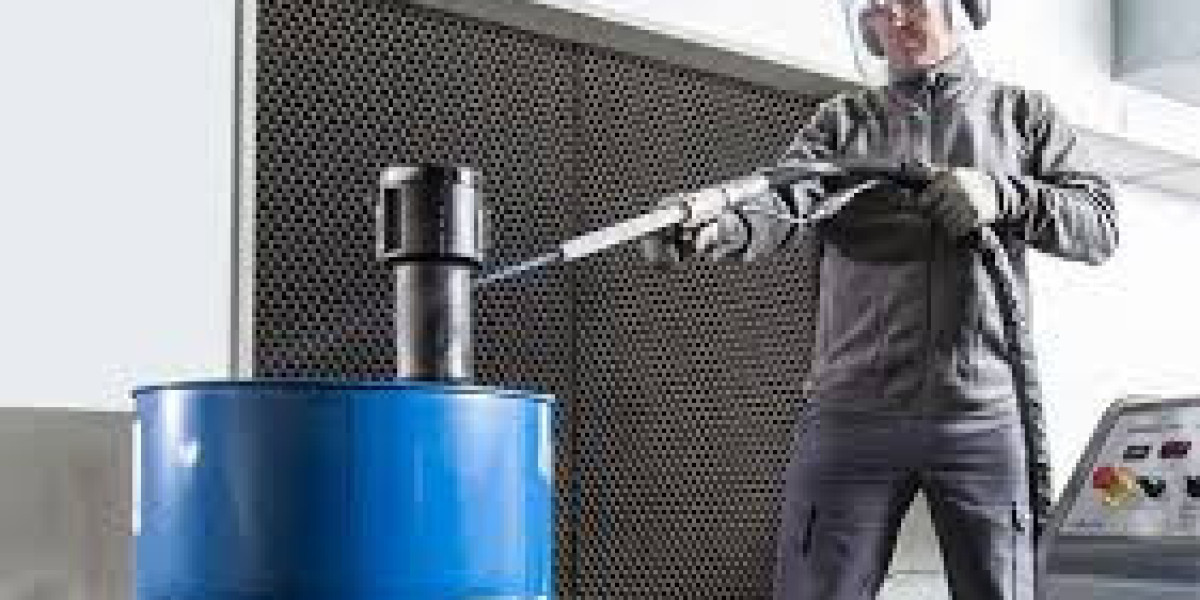Dry Ice Blasting: A Cleaner Future Written in Cold Gas
Innovation in the industrial cleaning sector might sometimes take the form of reinventing what currently exists rather than inventing something entirely new. One such invention is dry ice blasting. This method, which just requires compressed air and frozen carbon dioxide pellets, has established a niche for itself in sectors that require accuracy, cleanliness, and environmental responsibility.
However, why is dry ice blasting becoming as the preferred method for contemporary surface cleaning? Let's examine what makes this approach so vital in the modern world and so successful.
A Cold Approach to a Hot Problem
Traditional cleaning techniques have a number of drawbacks, including surface damage, environmental waste, chemical exposure, and expensive downtime. These include wire brushing, sandblasting, and harsh chemical washes. These are liabilities rather than merely annoyances for businesses that handle delicate materials, food-grade surfaces, or sensitive equipment.
Dry ice blasting addresses these issues quickly, accurately, and scientifically. It employs compressed air to propel dry ice pellets—the solid form of carbon dioxide—at high speeds. These pellets use kinetic velocity, intense cold, and sublimation—the direct conversion of a solid into a gas—to remove impurities upon impact.
The outcome? strong cleaning without water, abrasion, or residue.
The Three Forces at Work
Dry ice blasting is effective not because of brute force, but because of smart physics. Here’s what’s happening under the hood:
Impact
Dry ice pellets are launched at high speed to physically break up surface contaminants like grease, grime, mold, paint, or biofilm. Despite their velocity, the pellets are soft enough that they don’t damage the underlying material.Thermal Shock
At -78.5°C (-109.3°F), dry ice is incredibly cold. When it hits a warmer surface, contaminants rapidly contract, making them brittle and easier to remove — especially when they're bonded to metal, rubber, or plastic surfaces.Sublimation and Expansion
As the pellets hit the surface, they instantly turn into CO₂ gas, expanding up to 800 times their original volume. This rapid expansion creates tiny shockwaves that lift contaminants away, even from tight crevices or textured surfaces.
No Water. No Chemicals. No Mess.
What dry ice blasting doesn't leave behind may be its greatest benefit.
Unlike sandblasting, which leaves a mess of abrasive material behind, there is no secondary waste. Since there is no moisture present, it is perfect for delicate machinery and electrical components. Additionally, surfaces in pharmaceutical or food processing environments remain safe and compliant because there are no harmful residues left behind.
The loosened debris, which is frequently small enough to vacuum or sweep away, is all that remains when the dry ice sublimates and simply disappears into the air.
Where It's Used — And Why It Works
Dry ice blasting is making a mark across a wide range of industries. Here are just a few:
Food Manufacturing: Removes baked-on residues from ovens, conveyors, and molds without chemicals or contamination risk.
Automotive: Cleans engines, undercarriages, and electrical components without disassembly or damage.
Aerospace: Maintains critical components and molds with precision cleaning that won’t compromise integrity.
Historical Restoration: Strips away soot, mold, and decay from fragile surfaces like stone, brick, or wood.
Electronics & Plastics: Cleans injection molds, circuit boards, and sensitive housings without static or residue.
What ties all these applications together is a need for non-invasive, dry, chemical-free cleaning. That’s exactly what dry ice blasting delivers.
Eco-Friendly Without Compromise
In a time when environmental responsibility is more than a corporate checkbox, dry ice blasting stands out as a truly sustainable solution:
No chemical runoff into water systems.
No abrasive materials to collect and dispose of.
Reduced water consumption, especially valuable in drought-prone areas.
Recycled CO₂ use — most dry ice is made from reclaimed industrial emissions, turning waste gas into a productive tool.
It’s rare to find a solution that’s both industrial-grade and planet-conscious, but dry ice blasting fits that bill.
Is It Perfect? No — But It’s Close
Dry ice blasting does, of course, have certain drawbacks. It necessitates specific tools, safety instruction (particularly regarding ventilation in enclosed areas), and availability to dry ice, which isn't always easily accessible. A more abrasive approach can still be necessary for surfaces that are heavily corroded or encrusted.
But these challenges are manageable and often outweighed by the benefits. Dry ice blasting is an obvious winner for many businesses since it saves time, prevents damage, and has a less environmental impact.
Conclusion: The Smart Way to Clean
Dry ice blasting is, in many respects, the industrial cleaning method of the future. It is smarter, cleaner, and more in line with the modern world's values of efficiency, sustainability, and safety.
Dry ice blasting is no longer a specialized option as companies continue to modernize and adopt procedures that minimize damage without compromising performance. It's a tactical benefit.
Therefore, keep in mind that occasionally the smartest solution is also the coolest one the next time your organization encounters a challenging cleaning problem.








